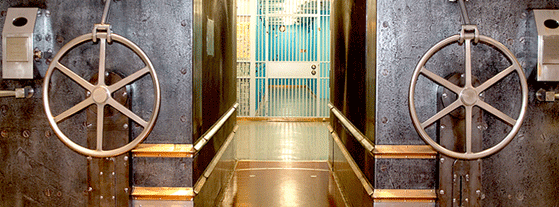Chapter 12 (Part 1): The Magic Money of Capitalism (and the Missing 9/11 Gold)
Money is magical because it appears/disappears out of thin air.
If you are new here, we are reading David Graeber’s Debt: The First 5,000 Years. Catch up and join us on Thursdays in 2025. My first slow read here on Substack in 2023 was David Graeber’s The Dawn of Everything. These two books showcase his thesis on the development of humanity by looking at how people organise themselves and their world around human values and choices. Unique among his peers, Graeber still asks the big questions in anthropology.
Almost at the end…
We approach the final chapter in the book, and I ask, how does the Western form of capitalism from our shared past continue today? Graeber and I continue this query: What form of capitalism do we have today?
Unsurprisingly, I find that the capitalism we recognise today remains intricately linked to our past. Graeber raises several points that we shall discuss in the following posts:
The obfuscation of money or its fetishisation (imagining money as having its autonomy separate from people)
The war economy is the basis of our capitalist (debt) system
The continued debt peonage of citizens
So far, these are the three points that I have identified, and the more I read and re-read the chapter, the more that will emerge.
Let’s look at the fetishisation of money (or how money, as contracts of debt between people, is re-imagined as mysterious and possesses its own social characteristics, dare I even say, its own life and power) in today’s post.
Magic Money
Graeber begins with a fantastic story about gold underneath the World Trade Centre (WTC) buildings. Wild conspiracy theories abounded during the period of the 9/11 attacks in 2001. Billions of gold disappeared or went unrecovered underneath the rubble as the WTC fell. Some of the speculation (including a fictionalised account of how this was done) was linked to a money heist by the government. (I had not heard about this rumour at that time).
Graeber’s sleuthing came up with some interesting facts about gold:
The United States Treasury, indeed, stored its gold in Fort Knox.
The Federal Reserve Bank possesses a vault that holds the gold reserves of the U.S. government, foreign governments, other central banks and international organisations. It is located two blocks away from the WTC building and was safe during the 9/11 attacks.
The conspiracy theories mentioned from the news referred to the gold and silver bullion stored by COMEX, or the Commodity Exchange, at the WTC. The metals were used as guarantees for contracts traded under the New York Mercantile Exchange. The stories exploded that the gold was either carted out mysteriously or remained buried under all the rubble, never to be retrieved. (A loss in untold billions?!1)

So far, the news reported that $275-300 million worth of gold and silver had been retrieved. NYMag goes as far as to say that all of the metals were accounted for (or did it?)
Such fantasies and fascination characterise what Graeber describes as an American populism about money. There remains the idea that banks can simply ‘create money out of nothing.’ The magical quality of money stems from two phenomena:
The convoluted system of its production, storage, and trade.
The disentangling of the dollar from the gold standard
America’s Temple System
The monetary system is arcane and difficult to parse. William Greider, author of the history of the Federal Reserve, The Secrets of the Temple, likens the American money system to the Catholic Church. In his interview with Richard Syron, a vice president of the Boston Fed, he describes it as follows,
The System is just like the Church. That’s probably why I feel so comfortable with it. It’s got a pope, the chairman; and a college of cardinals, the governors and bank presidents; and a curia, the senior staff. The equivalent of the laity is the commercial banks. If you’re a naughty parishioner in the Catholic Church, you come to confession. In this system, if you’re naughty, you come to the Discount window for a loan. We even have different orders of religious thought like Jesuits and Franciscans and Dominicans only we call them pragmatists and monetarists and neoKeynesians.
p. 54 (bold is mine)
We have previously encountered this historical comparison with other temple economies, such as in early Mesopotamia, except that the outcome is deliberately opposite to its objective of charity and distributive justice. Its reason for being is to loan money to the government, which in turn spends most of it on the military or national security (more on that later).

How it works
You might be surprised to know that the U.S. government does not print money. It is the Federal Reserve that has that authority. It is a peculiar public-private entity that is composed of private banks but with a chairman appointed by the President, with Congressional approval. This is the extent of its public oversight because it has none.
The main purpose of the Federal Reserve is to loan money to the U.S. Government. The Fed buys Treasury Bills from the government, which in effect are loans. It then monetises the debt by issuing Federal Reserve Notes, the dollar bills, which are promissory notes printed by the Mint at four cents for every bill. These promissory dollar bills are then lent to other banks. The amount of money is fixed and no bank can print money.
However, banks create more money by lending additional amounts above the ‘fractional reserve rate’ or a percentage of a bank’s total deposits that it must keep in reserve to meet withdrawal demands. The Fed establishes this rate, which is now set at zero. Instead, the Fed pays banks interest for the money that it stores (IORB, the Interest on Reserve Balances). This influences liquidity in the market.
Gold and War
Magic happens when the Fed can seemingly print money out of thin air. It exists because the Fed says it is there. And so it is. This is especially salient when gold was decoupled from fiat money (paper money). This means that a government can issue any amount of paper money because it is no longer required to have an equivalent in gold in its reserve.
In the case of the U.S., its dollar currency became the new gold standard. Graeber opens the chapter with President Nixon announcing on August 15, 1971, that foreign-held U.S. dollars can no longer be exchanged for gold. The consequences are that gold prices immediately shot up, up to $600 per ounce in 1980 and as high as $800 at its peak. This made the U.S. gold reserves very valuable at the expense of poorer countries with fewer reserves.
Why was this necessary? Of course, war. More specifically, Graeber argues, to pay for the Vietnam War. This is nothing new, as government debt has always been used to fund national security or war. What is new is the runaway inflation that resulted from printing endless paper money.
We’ll look more deeply into it in our next post.
Round-Up
The last chapter examines the form in which contemporary capitalism takes its shape. I focus here on the fetishisation of money or how money acquired its mysterious social characteristics. Instead of its function as a debt relationship between people or between citizens and their government, it is seen as magical and imbued with power. Let’s take the case of the U.S. Graeber argues that the gold speculation at the WTC building after 9/11 is an expression of the populist beliefs of Americans about money.
Aside from this, fetishisation of money happens due to its arcane complex production and distribution. Like a secretive temple complex, the Federal Reserve Bank consists of private banks who has a government-appointed and approved chairman. It is the sole authority on how much to print money (in effect, how much to lend to the U.S. government) without undergoing public oversight.
The obtuseness and obfuscation of how money is produced and used are what make it an effective (and secretive) war funding machine.
Sources:
Greider, William. 1989. The Secrets of the Temple: How the Federal Reserve Runs the Country. New York: Simon & Schuster
Wernick, Adam and Steve Atlas. The 1966 Fulbright hearings on Vietnam parted the curtains on President Johnson’s conduct of the war. The World, September 22, 2017
Find your way around: the book outline
Re-read the previous post:
Chapter 11 (Part 8): The Apocalypse in Western Casino Capitalism
Whether in France's court capitalism or England's industrial capitalism, capital extraction always portends of imminent destruction to the human way of life.
Actually, when you look at the audit figures, the total amount of gold held in the different United States institutions is valued only at $11 billion (about 261 million troy ounces) in 2021.



